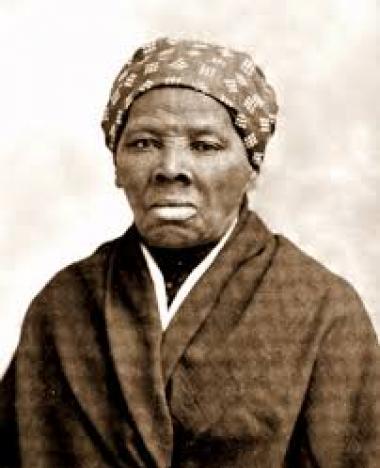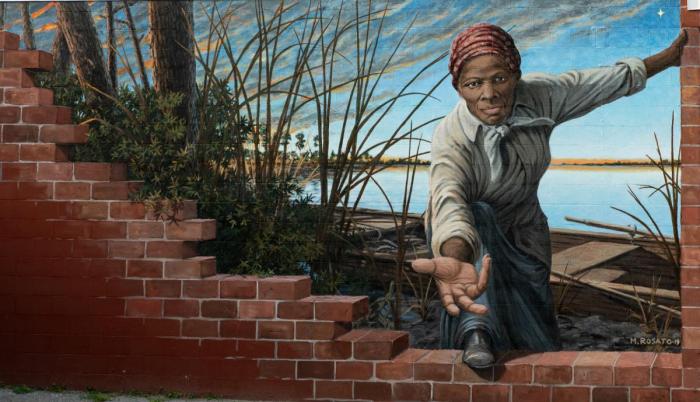
Araminta “Minty” Ross is the birth name or “cradle name” of “General” Harriet Ross Tubman (1820?–1913), who was born into slavery in Dorchester County, Maryland, married a free black man named John Tubman, and, at the time of her marriage, took the name Harriet to honor her mother and also took her husband's last name Tubman, thus becoming the woman known as Harriet Tubman. She escaped slavery in 1849, leaving her family behind and finding her way by the North Star to Philadelphia, Pennsylvania. She returned from the free North to the slave South thirteen times (some sources say nineteen) to bring out her family and 70 other slaves (some sources say 300 slaves, but many historians believe this number is exaggerated) and became a famous abolitionist orator and activist in the Underground Railroad. So powerful was her contribution toward freeing enslaved people that, at one time, a reward of $40,000 was offered for her capture (some historians say this number is a myth). Frederick Douglass, among others, called her Moses, because of her work in freeing slaves. During the Civil War, she worked for the Union Army as a cook, nurse, and spy. After the war, she settled in Auburn, New York, where, in 1896, she established the Harriet Tubman Home for the Aged and where she lived out her days. In 1913, she was buried at Fort Hill Cemetery in Auburn with full military honors.
In 2016, the U.S. Treasury Department announced that a plan was under way to replace Andrew Jackson's image on the twenty dollar bill with a portrait of Harriet Tubman. Two museums in Maryland (both of which are not far from where she grew up) and one in New York (where she lived out her final years) preserve and promote the history of this remarkable woman: the Harriet Tubman Museum & Educational Center in Cambridge, Maryland; the Harriet Tubman Underground Railroad Visitor Center in Church Creek, Maryland; and the Harriet Tubman National Historical Park in Auburn, New York.
In February 2020, more than 150 years after Maryland lawmakers signed into law the prohibition of slavery, Maryland lawmakers gathered at the State House in Annapolis, Maryland, for the unveiling of a bronze statue of Harriet, along with a statue of fellow abolitionist Frederick Douglass. The statues are located in the Old House Chamber—the room in which lawmakers abolished slavery in November 1864.
Note About the Artist Michael Rosato: Michael Rosato, who designs and paints large murals for private and public spaces, hand-painted the mural of Harriet Tubman titled "Take My Hand," which appears on the side of the Harriet Tubman Museum & Educational Center in Cambridge, Maryland. His website https://michaelrosato.com includes images of other murals he has painted and explains how he creates his work.











